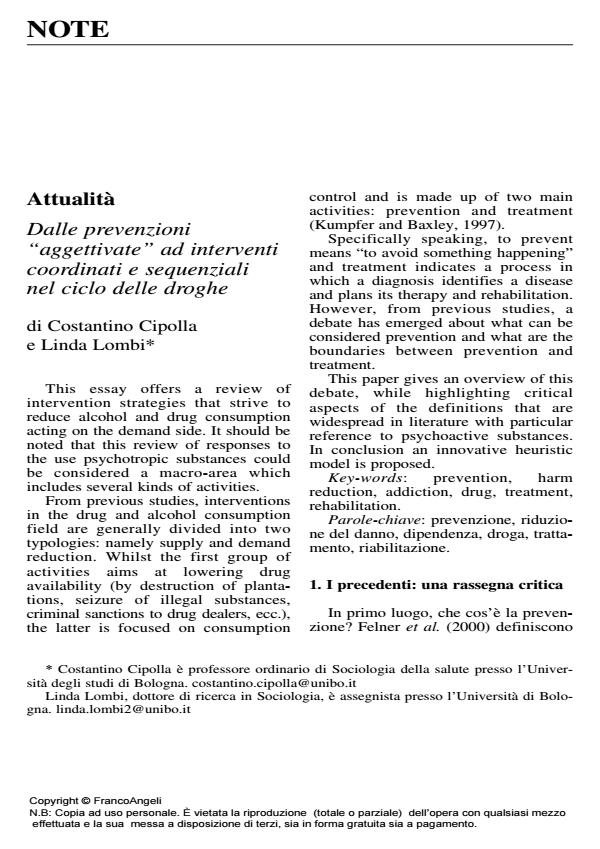Note
Journal title SALUTE E SOCIETÀ
Author/s
Publishing Year 2011 Issue 2011/1 Language Italian
Pages 25 P. 181-205 File size 446 KB
DOI 10.3280/SES2011-001014 IT
DOI is like a bar code for intellectual property: to have more infomation
click here

FrancoAngeli is member of Publishers International Linking Association, Inc (PILA), a not-for-profit association which run the CrossRef service enabling links to and from online scholarly content.
This essay offers a review of intervention strategies that strive to reduce alcohol and drug consumption acting on the demand side. It should be noted that this review of responses to the use psychotropic substances could be considered a macro-area which includes several kinds of activities. From previous studies, interventions in the drug and alcohol consumption field are generally divided into two typologies: namely supply and demand reduction. Whilst the first group of activities aims at lowering drug availability (by destruction of plantations, seizure of illegal substances, criminal sanctions to drug dealers, ecc.), the latter is focused on consumption control and is made up of two main activities: prevention and treatment (Kumpfer and Baxley, 1997). Specifically speaking, to prevent means "to avoid something happening" and treatment indicates a process in which a diagnosis identifies a disease and plans its therapy and rehabilitation. However, from previous studies, a debate has emerged about what can be considered prevention and what are the boundaries between prevention and treatment. This paper gives an overview of this debate, while highlighting critical aspects of the definitions that are widespread in literature with particular reference to psychoactive substances. In conclusion an innovative heuristic model is proposed.
Keywords: Prevention, harm reduction, addiction, drug, treatment, rehabilitation
, Note in "SALUTE E SOCIETÀ" 1/2011, pp 181-205, DOI: 10.3280/SES2011-001014 IT